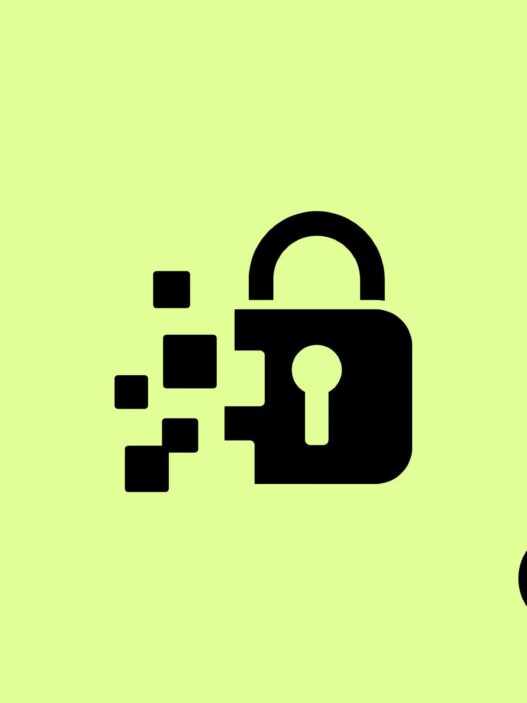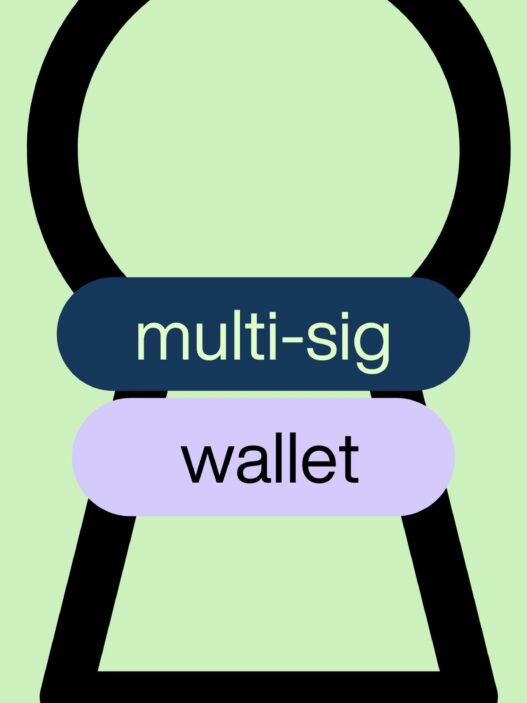Before we stan Ledger too hard, let’s break down the basics: what’s a cold wallet? Picture this—you’ve got a stack of ETH or a BTC fortune, and you’re sweating every exchange hack headline (looking at you, Mt. Gox). A cold wallet is your offline superhero, keeping your private keys—the secret codes that unlock your crypto—locked away from the internet’s grubby paws. Unlike hot wallets (those apps or browser extensions always online), cold wallets are physical or isolated storage methods that scream security over convenience.
Think of it like this: a hot wallet’s your pocket cash—handy but pickpocket bait. A cold wallet? That’s your safe bolted to the floor—harder to access but damn near impossible to steal.
Types include:
- Hardware Wallets: Devices like USB drives or smartcards (Ledger’s specialty).
- Paper Wallets: Keys printed or scribbled on paper—retro but risky if lost.
- Air-Gapped Devices: Offline computers or drives—nerd-level security.
- Steel Backups: Engraved metal plates for the apocalypse preppers.
Why go cold? The stats don’t lie—Forbes reported $2B stolen from hot wallets in 2022 alone. Cold wallets dodge that drama by staying offline, making them the gold standard for HODLing or big stacks. Investopedia nails it: “Cold storage sacrifices speed for safety.” And that’s where Ledger struts in, turning that sacrifice into a flex.
Meet Ledger Wallet: The Cold Storage King
Alright, let’s talk Ledger. Born in 2014 in France, Ledger’s the brainchild of eight crypto and security gurus who saw the wild west of blockchain and said, “We’ve got this.” Fast forward to 2025, and they’re the OG hardware wallet champs, with over 7 million devices sold worldwide (per their site). Headquartered in Paris, with vibes in New York, Zurich, and Singapore, Ledger’s mission? Secure your crypto like Fort Knox while keeping it user-friendly enough for your non-techie cousin.

Ledger’s lineup—Flex, Stax, Nano X and Nano S Plus — isn’t just about USB sticks anymore. These are sleek, next-gen gadgets packing serious tech. Nano X rocks Bluetooth for mobile moves, Stax flaunts a touchscreen fit for NFTs, and Flex blends style with substance. What’s the secret sauce? A combo of offline key storage, a proprietary OS (BOLOS), and a Secure Element chip (think passport-level security). It’s cold storage that doesn’t feel like a chore—more on why that’s a game-changer next.
Why Ledger Is Different: The Standout Sauce
So, why’s Ledger the crypto community’s darling over Trezor, SafePal, or that sketchy paper wallet your buddy swore by? Let’s break it down with the facts and some X-worthy hype.
1. Seedless (Kinda) + Secure Element Vibes
Most wallets (looking at you, Trezor) lean on a 12-24 word seed phrase for recovery—great until your dog eats it or a hacker phishes it. Ledger’s base setup stores your private key on a Secure Element (SE) chip—certified to CC EAL6+ standards (top-tier, per Moneywise)—and keeps it there. No seed phrase needed unless you opt in with Ledger Recover. It’s like a vault with no spare key floating around. Reviewers rave that your keys never leave the chip—hackers can’t even dream of it.
2. BOLOS: The Custom OS Flex
Ledger’s Blockchain Open Ledger Operating System (BOLOS) isn’t some open-source free-for-all—it’s proprietary, locked down, and built for their hardware. This closed system boosts stability and security, unlike Trezor’s open-source approach that invites community audits but risks exploits. BOLOS + SE = a fortress hackers can’t crack.
3. Bluetooth & Mobile Mastery
Nano X and Flex bring Bluetooth to the table—tap your phone, manage your stash, no cables needed. Trezor’s Model T? Still tethered to USB life. CoinBureau’s 2025 Nano X review says it’s “a powerhouse for on-the-go HODLers.” Pair it with Ledger Live (their slick app), and you’re sending BTC from a beach or staking SOL at a café—cold storage with hot wallet vibes.
4. Design That Slaps
Ledger’s gear looks good—Nano S Plus is a budget-friendly USB king ($79), Nano X ups the ante ($149), Flex ($249) rocks a touchscreen, and Stax ($399) is a futuristic flex with E Ink curves. Compare that to Trezor’s clunky plastic or SafePal’s basic build—Ledger’s got style and substance.
5. Third-Party Party
Ledger Live isn’t just a wallet app—it’s a hub. Users can buy crypto via partners (Coinify, MoonPay), swap tokens, stake ETH, and manage NFTs, all while their keys stay offline. Plus, it hooks up with hot wallets like MetaMask or DeFi platforms via WalletConnect.
6. Audits & Trust
Ledger Crypto Wallet products have been audited by the French National Agency for Security (ANSSI) and keeps a hacker team (Donjon Labs) on payroll to stress-test their gear. No device hacks reported—ever (per Moneywise). A 2020 data breach hit their servers, not wallets, and they’ve tightened up since. Trust? Still sky-high on X.
When to Use Ledger Wallet:
Your Crypto Life, Sorted
So, when’s the right time to rock a Ledger? It’s not a one-trick pony—here’s the playbook:
1. HODLing Like a Champ
Got BTC or ETH you’re holding till the moon? Ledger’s your bunker. Stash your Nano in a safe, split backups (more on that later), and sleep easy. Ledger crypto wallet is perfect for long-term storage—offline is unbeatable.
2. Big Stacks, Big Security
If your portfolio’s hitting five or six figures, hot wallets are a liability. Ledger’s cold storage keeps whales safe—think $10K+ in BTC, ETH, or stablecoins.
3. NFT & DeFi Moves
Minting NFTs or farming yield on Aave? Ledger integrates with MetaMask or Phantom, keeping your keys offline while you play Web3. Stax’s touchscreen even displays your Bored Apes—flex that on X!
4. Travel HODLing
Crypto nomad? Nano X’s Bluetooth or Flex’s portability let you carry your stash without paranoia. Store one device at home, carry another—security meets wanderlust.
5. Gifting Crypto
Onboarding a newbie? Load a Nano S Plus with BTC or DOGE and gift it—secure and tangible. It’s a vibe that beats a QR code scribbled on a napkin.
When NOT to Use It
- Day Trading: Too slow—stick to hot wallets like Trust for rapid trades.
- Tiny Balances: $20 in SHIB? Hot wallet’s fine—Ledger’s overkill.
- Tech-Phobic: If plugging in a device freaks you out, start with Coinbase Wallet.
Which Cryptocurrencies Does Ledger Support?
Ledger Crypto Wallet is a beast—over 5,500 coins and tokens across 50+ blockchains, per their website. Here’s the rundown, sourced from Ledger’s official list, YouTube breakdowns, and CryptoCloud:
The Heavy Hitters
- Bitcoin (BTC): The OG—send, receive, HODL.
- Ethereum (ETH): ERC-20 king, plus staking in Ledger Live.
- Ripple (XRP): XRP Army approved.
- Binance Coin (BNB): BEP-20 and BEP-2 vibes.
- Cardano (ADA): Stake it natively.
- Solana (SOL): Fast and furious.
Stablecoins & DeFi Stars
- USDT, USDC, DAI: Multi-chain support (ETH, Tron, etc.).
- Chainlink (LINK), Uniswap (UNI): DeFi essentials.
- Shiba Inu (SHIB): Meme coin madness.
Altcoin Gems
- Polkadot (DOT): Staking ready.
- Avalanche (AVAX): C-Chain love.
- Cosmos (ATOM): Interchain HODLing.
- Monero (XMR): Privacy FTW.
NFT & Layer-2 Action
- Polygon (MATIC): NFT minting hub.
- Arbitrum, Optimism, zkSync: Scaling solutions covered.
- Tezos (XTZ): Art blockchain vibes.
The Fine Print
Ledger Live natively manages 500+ assets—others need third-party apps (e.g., MyEtherWallet for ERC-20 deep cuts). What about NFTs you will ask? Store them via ETH or SOL apps, display on Stax or Flex. Check Ledger’s Supported Assets page for all detailed list of supported assets.
Setting Up Ledger: A Step-by-Step Vibe Check
Next, let’s check how easy it is to use it and what do we need to do to get it working?
- Unbox the Beast: Nano X comes with a USB-C cable, recovery sheets, and swagger.
- Download Ledger Live: App Store, Google Play, or desktop—open-source and slick.
- Initialize It: Plug in (or Bluetooth for X/Flex), set a PIN (8 digits, don’t sleep on this).
- Backup Time: Write down your 24-word seed (optional with Recover), store it offline—steel backup like Billfodl if you’re extra.
- Add Crypto: Send BTC to your address via Ledger Live—tap to confirm on-device.
Most of the users confirm that the entire process takes no longer than 10 minutes – super newbie-friendly with pro-level security.
Ledger Models: The 2025 Lineup
Ledger’s got options—here’s the breakdown:
Nano S Plus ($79)
- Vibe: Entry-level king—USB-C, no Bluetooth.
- Storage: 1.5MB—up to 20 apps.
- Best For: Budget HODLers, small portfolios.
Nano X ($149)
- Vibe: Mobile-first with Bluetooth—USB-C too.
- Storage: 1.8MB—up to 100 apps.
- Best For: On-the-go pros, bigger stacks.
Flex ($249)
- Vibe: 2.84” touchscreen, Bluetooth, USB-C.
- Storage: 1.8MB—100 apps.
- Best For: NFT fans, style seekers.
Stax ($399)
- Vibe: 3.7” E Ink touchscreen—curved and luxe.
- Storage: 1.8MB—100 apps.
- Best For: Whales, NFT collectors.
Pros and Cons
No wallet’s flawless—here’s the tea:
Pros
- Security: SE chip + BOLOS = unhackable rep (Moneywise).
- Coin Support: 5,500+—beats Trezor’s 1,800.
- Ease: Ledger Live’s UI slaps—beginner to pro.
- Design: Sleek AF—X posts flex it hard.
- Flexibility: Hot wallet integration + staking.
Cons
- Cost: Stax at $399? SafePal’s $50 steals budget crowns.
- No Display (Nano): Trust your phone—COLDCARD’s screen wins here.
- Learning Curve: Seed management trips up newbies (YouTube comments agree).
- 2020 Breach: Server hack spooked some—devices stayed safe.
Safety Tips: Lock It Down
Ledger’s secure, but you’re the weak link—here’s how to HODL smart:
- Seed Phrase: Write it, engrave it (Billfodl), split it—never screenshot.
- PIN: 8 digits, no birthdays—change it if sketched out.
- Buy Direct: Shop.ledger.com only—second-hand scams swipe funds.
- Firmware: Update via Ledger Live—latest patches matter.
The Future of Ledger: 2025 and Beyond
Ledger’s not sleeping—X buzz hints at biometric upgrades (fingerprint PINs), wearable wallets (Nano Ring), and deeper DeFi ties. According to Forbes, hardware wallets will blend hot and cold by 2030. Ledger’s ahead, bridging that gap now.
Is Ledger Your Crypto Soulmate?
Ledger Crypto Wallet is cold storage royalty. It’s not just a device—it’s a lifestyle for HODLers, whales, and NFT chasers who want security without the snooze. Nano X balances cost and utility, Stax flexes for the elite, and 5,500+ coins mean your portfolio’s covered. Grab one and secure your stack, and flex on X—your crypto deserves it.





















